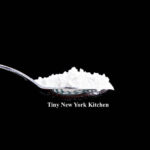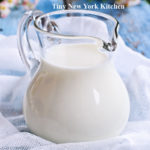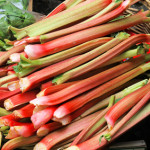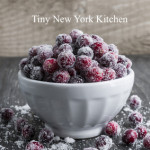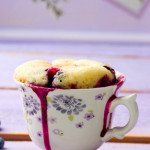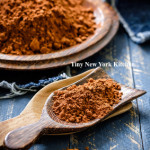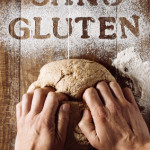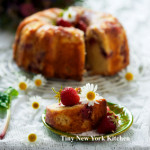Buttermilk is a fermented dairy drink that was traditionally the liquid left behind after churning butter out of cultured cream. Today, most modern buttermilk is cultured. Cultured buttermilk was first commercially introduced in the US in the 1920s. Commercially produced buttermilk is milk that has been pasteurized, homogenized, and then inoculated with a culture of Lactococcus lactis to simulate the naturally occurring bacteria in the old-fashioned buttermilk. The tartness of cultured buttermilk is primarily due to lactic acid produced by lactic acid bacteria while fermenting lactose, the primary sugar in milk.
Condensed buttermilk and dried buttermilk are very important in the food industry. Liquid buttermilk is used primarily in the commercial preparation of baked goods and cheese. Buttermilk solids are used in ice cream manufacturing as well as being added to pancake mixes to make buttermilk pancakes.
Buttermilk reacts with the baking soda and powder to give quick breads their rise and tender crumb. The reaction is best at the beginning, you’ll want to get the loaf in the oven right after mixing the wet and dry ingredients. Buttermilk can also be used in marinating meats, especially chicken and pork, because the lactic acid helps to tenderize, retain moisture, and allows added flavors to permeate the meats.
©Tiny New York Kitchen © 2021 All Rights Reserved
Lucky Foods For New Year’s Day
This New Year’s make a resolution to bring yourself a heaping helping of good luck. It’s as easy as just making dinner.
In cultures around the world, the new year is celebrated with particular foods and recipes thought to bring good fortune. Symbolizing wealth, long life, and prosperity, lucky foods are an auspicious and delicious way to celebrate the holiday and welcome good things in the coming year.
Pork & Sauerkraut
Tender braised pork, along with other forms of pork (like sausages and roasts) is a symbol of abundance in Celtic and Chinese cultures, and is popular amongst the Pennsylvania Dutch on New Year’s Day. Paired with the cabbage in sauerkraut, a Chinese symbol of wealth and prosperity, this easy braise with apples and onions is one tasty pot of good luck.
Black Eyed Peas, Greens & Cornbread
Traditionally eaten in the South on New Year’s Day, this trifecta of ingredients represents three different types of money. Leafy greens represent dollar bills, the round peas symbolize coins and cornbread is the color of gold.
Grapes
According to Spanish lore, eating 12 grapes as the clock chimes midnight on New Year’s Eve will bring you 12 months of good luck. Incorporate this tasty tradition by adding grapes to your holiday cheese board or dessert platter. Or try a delicious side dish with savory sautéed Brussels sprouts, grapes, and crunchy walnuts.
Pomegranates
In Greece, smashing a pomegranate on the floor to release the seeds is a surefire way to bring good luck. The seeds represent abundance and fertility. The more seeds you see, the luckier you’ll be. Instead of smashing, sprinkle that good fortune over peak season oranges, mixed greens, and prosciutto for a colorful celebration of a salad.
Fish
Fish are thought to represent progress and abundance because they constantly swim forward and group together in schools. In Czech culture, the scales of the fish are considered lucky because they resemble silver coins and if you carry a silver coin in your wallet it is said that your money will never run out. Celebrate the new year abundantly with a fish dish that everyone will enjoy.
Noodles
No Chinese New Year, Lunar New Year, celebration is complete without a bowl of noodles. Symbolizing longevity and health, noodles are always left whole. Breaking or cutting a long strand of noodles is considered bad luck. Nourish a long life with a longevity noodles dish.
Cake
Ring shaped cakes, like Bundt cakes, are a sweet way to celebrate coming full circle from the previous year. In cultures around the Mediterranean, a coin is baked into the cake and thought to bring wealth and good fortune to the lucky recipient who finds it. Bake a delicious ring-shaped cake and be sure to warn your guests if you decide to bake it with a coin hidden inside.
©Tiny New York Kitchen © 2020 All Rights Reserved
Serve sugared cranberries in place of nuts or use as a garnish for cakes, pies, or cocktails. If you don’t have superfine sugar then make your own by pulsing granulated sugar in a food processor for about a minute.
“Work With What You Got!”
©Tiny New York Kitchen © 2019 All Rights Reserved
You may substitute any berries for this delicious mug cake.
“Work With What You Got!”
©Tiny New York Kitchen © 2019 All Rights Reserved
Cocoa powder is mostly used for pudding and cakes. 100% cocao powder also adds rich earthiness to rubs for roasted or grilled meat.
“Work With What You Got!”
©Tiny New York Kitchen © 2019 All Rights Reserve
We love autumn, but we’re giving it one last-ditch effort to savor the remaining glimmers of summer. You may frost this cake or leave it plain.

